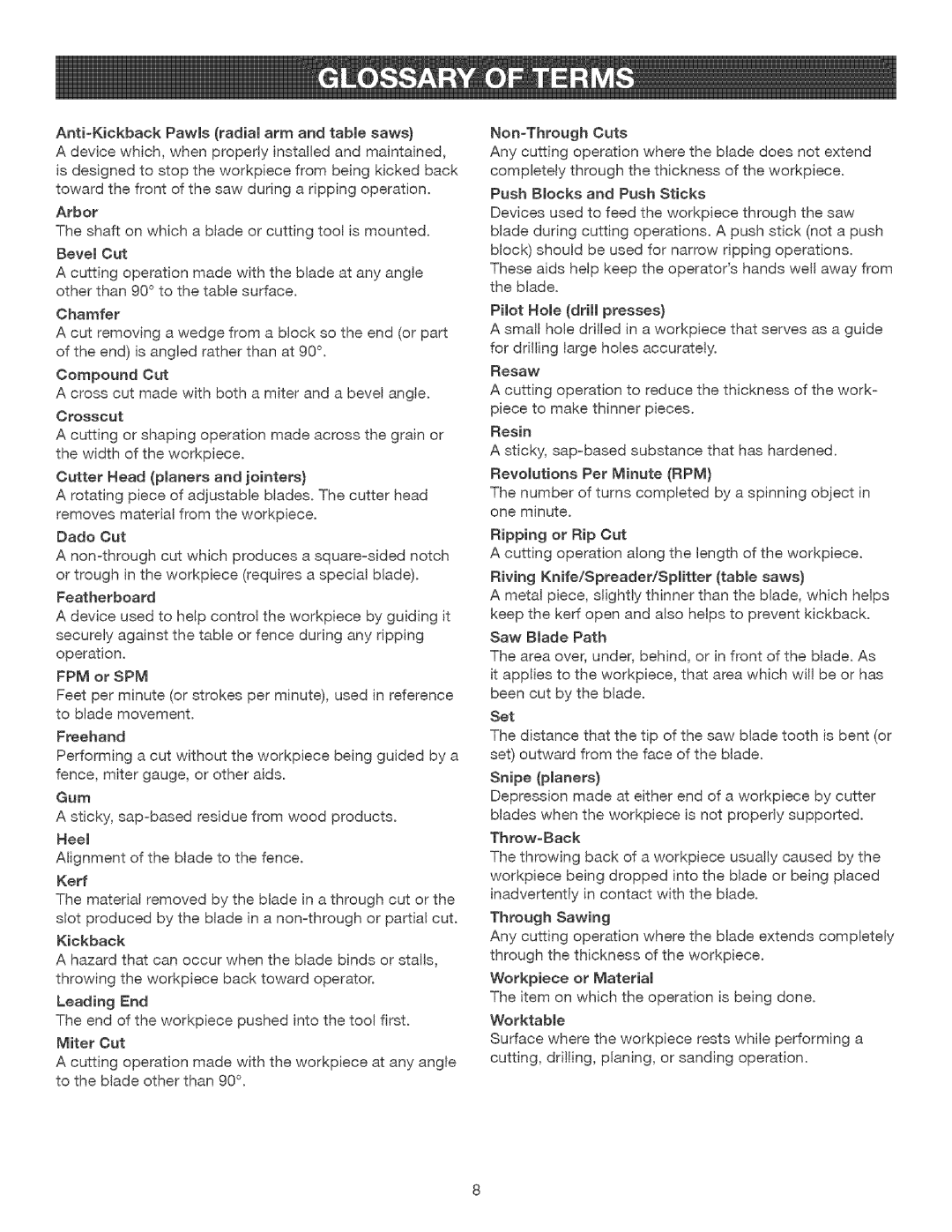315.21477 specifications
The Craftsman 315.21477 is a versatile and highly sought-after tool known for its robust performance and user-friendly design. This tool is part of the Craftsman brand, which has built a reputation for quality and reliability over the years. The 315.21477 model is particularly favored among DIY enthusiasts and professionals alike for its innovative features and technologies.One of the main features of the Craftsman 315.21477 is its powerful motor, which provides ample torque and speed for a variety of applications, from home repairs to intricate crafting projects. The tool is equipped with a variable speed control system, allowing users to adjust the speed settings according to the task at hand. This flexibility makes it ideal for tasks that require precision, such as sanding, drilling, and cutting.
The Craftsman 315.21477 is built with user comfort in mind. It features an ergonomic design that reduces hand fatigue, ensuring users can work for extended periods without discomfort. The rubberized grip provides a secure hold, giving users increased control and stability while using the tool. Additionally, the lightweight construction makes it easy to maneuver, making it perfect for both indoor and outdoor use.
In terms of versatility, the Craftsman 315.21477 boasts a range of attachments and accessories that allow it to perform multiple functions. From changing attachments to switching between various tasks, the tool can easily adapt to meet the needs of different projects. This multi-functionality reduces the need for multiple tools, saving both space and money.
Safety is a key consideration in the design of the Craftsman 315.21477. The tool comes equipped with safety features such as a paddle switch for easy shutdown and a built-in overload protection system, which helps prevent damage to the motor in case of excessive strain.
In summary, the Craftsman 315.21477 stands out in the market due to its powerful motor, variable speed control, ergonomic design, versatility, and enhanced safety features. It is a reliable choice for anyone looking to tackle a wide range of tasks with ease and efficiency. Whether you are a seasoned professional or a casual DIYer, the Craftsman 315.21477 offers the performance and reliability needed to get the job done right.

